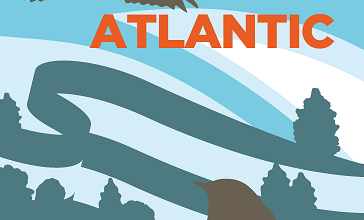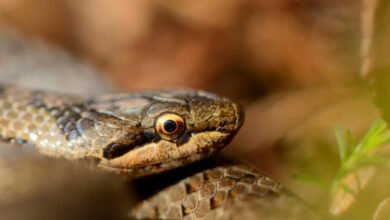
Bob Berzins is a campaigner and activist.
His previous guests blogs here all focus on the management, or mismanagement, of upland areas such as the Peak District, Walshaw Moor and the North York Moors. See also his novels Snared and The Last Crow.
Of all the environmental damage found on grouse shooting moors, road building is the one thing that results in a permanent change to these fragile protected sites – until the roads are removed. In the Peak District the Cartledge track (2014) at Strines was constructed from crushed stone and the Midhope track (2015) mainly from plastic matting. Natural England consented both these tracks but crucially failed to obtain planning consent from the Peak District National Park Authority (PDNPA) and it’s been a 10-year battle to get the tracks removed.

Here’s the timeline for the Midhope track:
Construction of plastic matting track of 800m laid across the Mickleden Valley completed in January 2015. Peat depths along the route vary from 20cm to 1+m with a range of dry heath dwarf shrubs and blanket bog mosses.
The track cost £20,000 – funded by public money via Natural England.
PDNPA issued an enforcement notice in 2018 which essentially required the removal of the track and restoration of the land.
The landowner appealed against the enforcement notice and this was heard at a public inquiry in July 2021.
The inspector appointed to determine the appeal issued his decision in November 2021. The inspector dismissed the appeal and upheld the enforcement notice.
As a result of the appeal decision, the enforcement notice required the removal of the track and carrying out of initial restoration works within 12 months with ongoing restoration required for up to 42 months. The landowner submitted an application to the high court for permission to appeal against the inspector’s decision but the application was refused at a hearing in February 2022.
As the track is within a Site of Special Scientific Interest, the works necessary to comply with the enforcement notice also require formal consent from Natural England under provisions contained within the Wildlife and Countryside Act 1981.
In May 2023, Natural England granted conditional consent for the works. In order to avoid the bird breeding/nesting season, the enforcement notice specifies that the works would be carried out between 1 September and 28 February, in the following year.
PDNPA wrote to the owner in June 2023 saying they expected the track removal and initial restoration to be carried out as soon as practically possible after 31 August 2023. PDNPA also reminded the owner that failure to comply with an enforcement notice which has taken effect can result in prosecution and/or remedial action by the Authority.
However, on 13 September 2023, Natural England informed PDNPA that an application to appeal their consent decision had been submitted to the Secretary of State and that they were awaiting the outcome on whether the appeal would proceed.
On 22 January PDNPA were formally notified that the appeal was proceeding, to be dealt with by hearing before an appointed inspector. (Appeals can proceed based on written evidence only).

I attended the hearing in July 2024 along with Natural England, RSPB, British Mountaineering Council, the landowner, Agents JM Osbourne Rural & Sporting and various lawyers. The Planning Inspector was scrupulously fair, giving us all an opportunity to speak. Of particular interest to me was the Agent’s insistence that the owner needed daily vehicle access to run his business and this took priority over any conservation concerns. Natural England countered that trashing a protected site from over use of quad bikes was actually illegal. But this and many other points had already been settled at the first inquiry in 2021, though that didn’t stop the landowner’s team from trying again.
At the end of the first day I was harangued by a senior Natural England manager who told me his staff felt attacked from all sides and he’d been tasked with replying to my complaint about the burning that filled Sheffield with smoke in October 2023 – I still haven’t received that response. And all I try to do is ensure NE are aware of what’s happening on these protected sites and they uphold the law.
Despite that conversation, the next day’s site visit was very pleasant and it was notable the gamekeeper (who needs to drive up the plastic track every day) was nowhere to be seen. Natural England – who consented and paid for the track in 2015 kindly sent me two research papers (co-authored by one of their scientists) which now show plastic tracks damage blanket bog (click here and click here).
We were told a decision would take a year, and ten months later the Defra deputy director and head of National Biodiversity wrote to say the appeal was rejected on technical grounds and also “we could not see any cogent reason why NE’s decision to grant consent should not be affirmed, were it capable of being appealed”.
So unless we’re going to the Supreme Court or the European Court of Human Rights, that’s it and the track should be removed and land restored as soon as possible after the nesting season.
There’ll be a big celebration when that happens.
++++++++++++++++++++++++++++++++++++++
Mark writes: there are at least three lessons to be learned from this sorry tale:
- An individual can make a real difference. Bob Berzins has been amazingly determined and dogged in following through on this issue over a long period. He didn’t give up and he has, it seems, won through in the end. I salute him and all those campaigners across the land who keep going and don’t give up. We all owe Bob and the others a debt of gratitude.
- The system failed this supposedly highly-protected site but, after a decade, came through in the end (assuming this is the end). It has taken much too long to right a wrong. Bob has been pressing public bodies, funded by you and me (assuming you pay your taxes) to do their jobs. ‘Who will watch over the watchers?’ or quis custodiet ipsos custodes – in this case it has been an individual called Bob.
- I had a victory on track-building back in 2018 where a legal challenge against Natural England’s decision to permit a track to be built on Walshaw Moor was successful, see these three blog posts for details: 9 May 2018, 10 May 2018, 11 May 2018. Prevention is clearly better than cure but it’s not always possible.
- Track-building on blanket bogs and other upland protected habitats for the convenience of recreational shooting of Red Grouse is just one of the many reasons we should ban driven grouse shooting and it’s good to report that today we hear that the ‘Ban driven grouse shooting’ petition will be debated in Westminster on 30 June – click here.
[registration_form]
Source link




